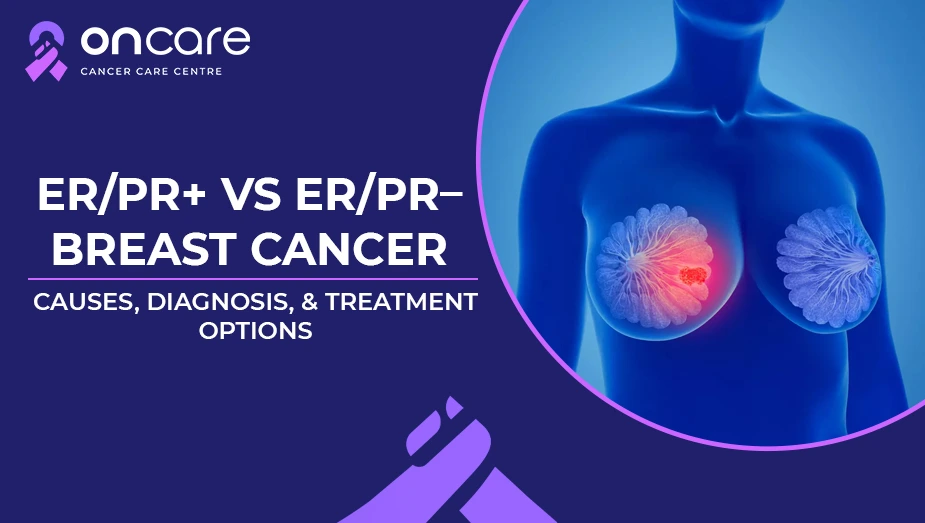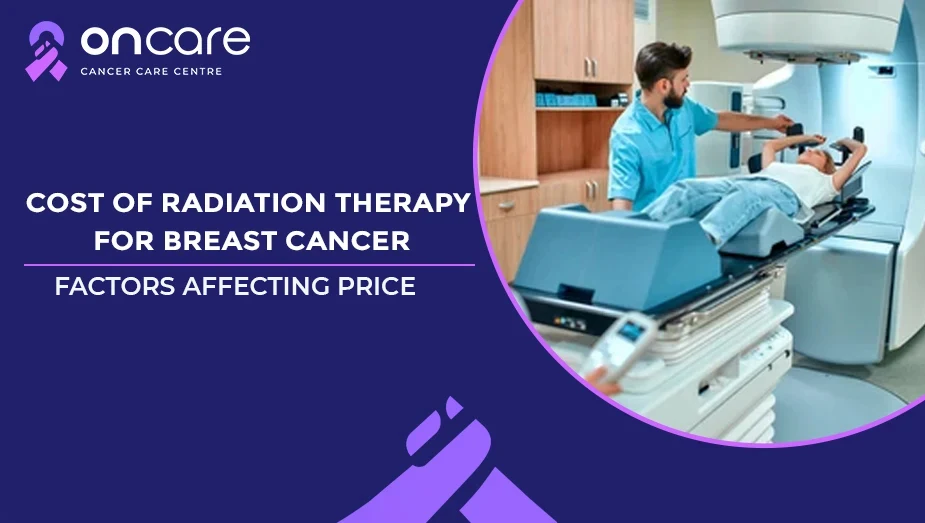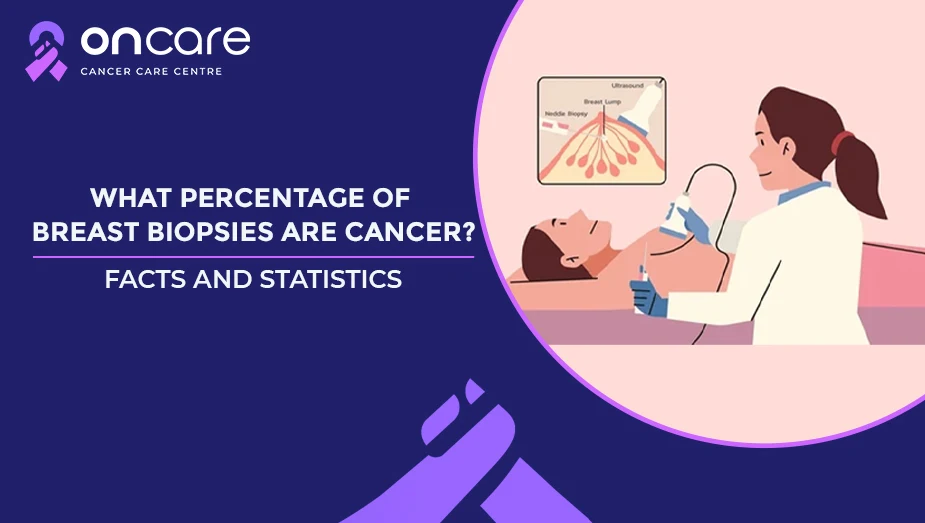Table of Contents
What is Multifocal Breast Cancer? Key Facts Patients Should Know

When you receive a multifocal breast cancer diagnosis, it can be highly triggering and intimidating. If you are concerned about ‘What exactly does multifocal breast cancer mean? How is it different from other breast cancer types? And what does it mean for your cancer treatment and outlook? Then read further; this blog is for you!
In this blog, we’ll discover more about the key characteristics of multifocal breast cancer and its diagnosis, treatment options, common treatment side effects, outlook, and prognosis!
What is Multifocal Breast Cancer?
According to the American Cancer Society, these types of cancer in which there are more than one tumor, all of them have developed from a one original tumor. These types of tumors are likely to be in the same quadrant section of the breast.
Understanding these terms often matters because the number of tumors and where they have located usually affects diagnosis, imaging, surgery options, and sometimes its treatment outcomes.
Key facts about Multifocal Breast Cancer
Many studies indicate that multifocal breast cancer is a common, not a rare type of cancer, with some studies suggesting that its incidence could be up to 60% of invasive breast cancers. Patients with these types of cancers might experience various lumps within the same breast. These tumours can be at different stages of development, which makes the symptoms less visible.
If you start to notice any sudden changes in your breasts, then consult an experienced breast cancer specialist immediately.
Some of the symptoms of these cancers may include dense breast tissue, or lumps, if you experience any of these signs, then do not ignore it; get an immediate medical evaluation as soon as possible.
Diagnosis
For a multifocal breast cancer diagnosis tests are especially crucial, for example: a mammogram, ultrasound, and often a MRIs might be used to determine these tumors originated from a single original tumor in the same breast quadrant. These diagnostic tests are used to determine the location and extent of tumours in the patients.
Pathology (biopsies) will check each lesion for tumor type, grade, receptor status (ER/PR/HER2) and other characteristics.
Treatments
The treatment for multifocal breast cancer is often considered as complex and includes a multimodal treatment approach, including medical oncologists, radiation oncologists, and surgeons. The main goal of treatment is to remove cancer while preserving the breast as much as possible.
Surgical procedures for multifocal breast cancer can include lumpectomy or mastectomy, with the possibility of sentinel lymph node biopsy or axillary lymph node dissection. Additionally, there are treatments such as adjuvant therapies like chemotherapy, targeted therapy, hormone therapy, and radiation therapy that are used to reduce the risk of cancer recurrence.
Chemotherapy is a systemic treatment that uses drugs to destroy cancer cells. These can be used to employ before surgery (neoadjuvant) to shrink tumors or after the surgery (adjuvant therapy) to reduce the risk of cancer recurrence in patients. However, targeted therapy and hormone therapy mainly focus on specific molecules that are involved in the growth and spread of cancer cells.
Radiation therapy often uses high energy X-rays to destroy cancer cells and shrink tumours. These treatments can be administered through a machine called external beam radiation or internally through the implantation of radioactives beams, also known as brachytherapy.
What are the most common treatment side effects
These cancer treatments can improve your survival odds, they can have side effects.
Here are some of the side effects of breast conserving surgery, including:
- Pain in the breasts
- Scarring
- Swelling
- Change in breast shapes
- Bleeding, bruising
- Infection
Here are some of the side effects of radiation therapy treatments, including:
- Redness
- Fatigue
- Swelling in the breast
- Irritation in the skin
- Peeling and itching
Outlook and prognosis
The survival rates for this type of cancer can vary, mainly depending on several factors, including the stage of your cancer, key characteristics of the tumor, and the selected treatment options. It's vital to understand that this cancer diagnosis is not the end of your life. Women diagnosed with this type of cancer live healthy and improved, fulfilling lives after the treatments.
Understanding the survival rates of these cancers can help the patients with expected treatment outcomes associated with the timing of your diagnosis. However, there are factors like age, individual health conditions, and response to treatments can greatly affect the treatment outcomes.
Multifocal breast cancer is two or more tumors that originate from an original tumor from one single breast, but they all originate from the same tumor, not developed independently from it. Cancer research has shown a 5-year survival rate, while the 5-year survival rate for cancer that is confined to the breast is 99 percent. If the cancer has spread to the lymph nodes in the area, then the expected survival rate of 5 years would be 85%.
Consult Today
A diagnosis of multifocal breast cancer brings worries along with some questions. The diagnosis doesn’t mean that it has worse survival rates and fewer treatment options. If you are diagnosed with these cancers, then do not worry. Try to talk to your doctor, and ask how the disease behaves and how well these can be treated with the support of your medical team.
If you are diagnosed with this cancer, remember that getting more informed about your disease makes you wiser and helps you to face your treatment journey with more grace and courage.
At Oncare, we offer premium-quality cancer treatments, including advanced cancer surgeries at an affordable price range with an experienced cancer specialist consultation.
If you or any loved ones of yours are diagnosed with cancer, then visit Oncare Cancer Center and book an appointment with our cancer specialist consultation today! Get an estimated cost of your cancer treatment today! Stay informed and take proactive steps towards your health, visit Oncare Cancer Center today and take control of your cancer treatment journey!
Frequently Asked Questions
Here are some of the treatment options used for multifocal breast cancer, including:
- Lumpectomy
- Mastectomy
- Radiation therapy
- Chemotherapy
- Surgery
Here are some of the signs and symptoms of multifocal breast cancer, including:
- Changes in skin
- Lumps
- Redness
- Nipple discharge
- Changes in the size of the breast
Here are some of the risk factors of multifocal breast cancer, including:
- Older age
- Dense breast tissue
- Family history of breast cancer
- Genetic mutations
- Obesity
- smoking
Book an Appointment
Related Blogs

ER/PR+ vs ER/PR– Breast Cancer: Causes, Diagnosis, and Treatment Options
Discover more about ER/PR+ vs. ER/PR– breast cancer, why these types of cancers matter in cancer diagnosis and its treatments, and why hormone receptors matter!

Cost of Radiation Therapy for Breast Cancer: Factors Affecting Price
Discover more about the cost of radiation therapy for breast cancer and factors affecting the cost of radiation therapy for these cancer treatments, and why cost discussion matters!

What Percentage of Breast Biopsies Are Cancer? Facts and Statistics
Discover more about what percentages of breast biopsies are cancer, types of breast biopsies and its cancer detection rates, BI-RADS score and its cancer risks!

Hormonal Therapy for Breast Cancer: Cost and Availability in India
Explore hormonal therapy for breast cancer in India, how it works, costs, availability, side effects, and expert care to support your treatment journey.

